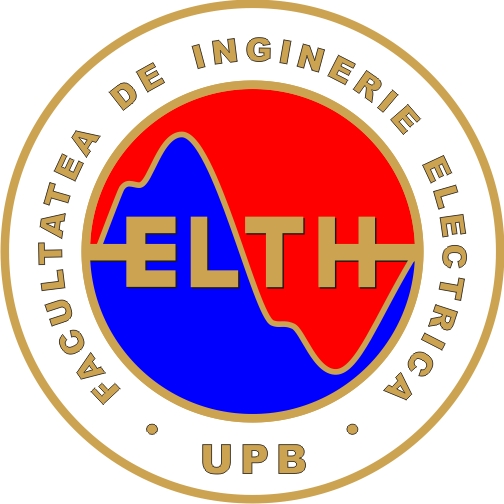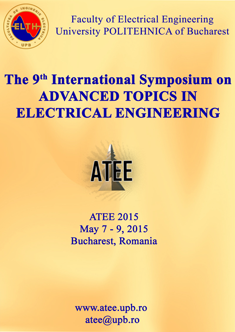Plenary Lectures
|
|
|
Plenary Lecture: Modeling |
|
Abstract:
Design of experiments (DOE) is a systematic method to determine the
relationship between the control variables and the output of a process.
Research and development of new processes can largely benefit from the use of
this methodology, as demonstrated by several examples in which it has been
successfully employed for the modeling and optimization of various
electrostatic technologies. The presentation will briefly describe the recent
advances achieved by the Applied Electrostatics Research Unit of the PPRIME
Institute of the University of Poitiers, France, in
the development of electrostatic processes for: (1) separation of granular
mixtures originating from waste electric and electronic equipment; (2) tribo-charging of powders in food industry; (3)
corona-charging of non-woven fabrics for air filtering applications. In each of these cases, DOE enables
the evaluation of the effects of the control variables, the identification of
the optimal operation conditions, and the assessment of the robustness of the
process.
|
|
Actual
research of his group focuses on technology and application of active (FES,
biotelemetry and electro-mechanical) and passive implants (long-term
stability and controlled degradation), limb prostheses and FES for
restoration of movement in central and peripheral (muscle denervation)
paralysis, spinal cord stimulation and mobility support for elderly - in
close collaboration with clinical and industrial partners and basic sciences. He is coordinator of the "Vienna Program for
Restoration of Movement" (VPRM), section editor for Functional
Electrical Stimulation (FES) of the journal "Artificial Organs" and
(co-)organizer of the triennial "Vienna International Workshop on
Functional Electrical Stimulation" since the first edition in 1983,
which is well established in the field and hosted the foundation of the
"International Electrical Stimulation Society" (IFESS) in 1995.
Since 2009 he chairs the "Austrian Society of Biomedical
Engineering" (OeGBMT). |
|
Plenary Lecture: |
|
Abstract:
Functional Electrical Stimulation (FES) can be a versatile tool for support
of movement rehabilitation. On basis of non-invasive (electrodes at the skin
surface) or invasive (implanted electrodes) techniques there are 3 options
for reactivation of lost muscle functions: 1) Stimulation of efferent nerves
- neuromuscular stimulation - as an early and still established method, 2)
Direct activation of muscle fibers - muscle stimulation - in absence of the
motor nerve, which can lead to similar contraction responses, and 3)
Stimulation of afferent nerve structures, which can lead to improvement in
impaired movement patterns by artificially substitution of missing neural
inputs to central neuronal networks in the spinal cord - movement pattern
generators. Applications of
electrical stimulation for restoration of movement reach back in the 18th
century. At this time stimulators based on electrostatic discharge became
available and were applied for treatment of post-stroke movement disorders.
Though over the years we see a constant growth in the knowledge on physiology
and pathophysiology of movement, technical
equipment progress was limited till the invention of the bipolar transistor,
mid 20th century, that suddenly enabled the construction of compact
battery-powered stimulators. Numerous non-invasive and implantable devices
for various applications where develop since, for experimental and clinical
research, only few got transferred to market and permanent availability for
patients in need. Earlier concepts
focused on stimulation of efferent motor nerves for direct reactivation of paralysed muscles or muscle groups; In
the recent past new developments started to rely more in taking advantage
from remaining intact neural structures in and below the lesion zone in the
spinal cord. There are promising developments in using non-invasive
stimulation of posterior roots at the lumbar spinal cord level to assess, in
combination with multi-channel EMG and sensor recordings, functional injury
profiles. These can be of value for primary post injury assessment and
intervention planning as well as for monitoring of applied protocols and
biological developments with time.
Similar setups can act as neuroprosthesis
for enabling, augmenting or modifying movements by
influencing altered central control mechanisms via non-invasively or epidurally placed electrode arrangements.
|
|
Research Interests: Modeling & data analysis and experimental aspects
of non-invasive analysis of dynamics of living cells and bio-interfaces using
(coupled) electric & optical (plasmonic) and
magnetic S(M)PR assays. The goal is to assess gentle
(non-lethal) bioeffects of various stimuli
including environmental ones using time based electro-optical (on bioaffinity and cellular platforms); Assessment of fish
dynamics in relation to the quality of their aquatic environment. Professional
Honors: “Stefan Procopiu” Award for Physics of the Teaching: PhD thesis advisor within the Synergistic
Activities: Expert of European
Commission- Evaluator of Proposals on biosensing-
since 1995; Member of Selection Committee for European Young Researchers’
Award - since 2010; Member of Evaluation Commissions of PhD thesis of:
University of New South Wales, Sydney, Australia, National University of
Singapore, Babes-Bolyai University, Cluj-Napoca and Polytechnic University of Bucharest;
Review Panel member- European Science Foundation – EuroBioSAS;
Promoter of 16 International Research Grants most representative: 3 FP7:
DYNANO (Contract People |
|
Plenary Lecture:
Plasmonic
based Electrical Impedance Spectroscopy, P-EIS: theoretical and experimental
aspects |
|
Abstract: The main advantage of P-EIS versus the classical EIS
analysis is given by the increased spatial resolution of P-EIS assays without
using (arrays) of microelectrodes or implementing scanning electrochemical
microscopy. When performing P-EIS measurements, the whole sensing area is accessible
with exquisite spatial resolution, which is not limited by the size or
distribution of the electrodes (as in the case of EIS) but solely by the
(lateral) propagation length of the surface plasmons.
Depending on sensor structure and incident light wavelength, this spatial
resolution could reach low, sub-micrometer range. The applicative potential
of the technique is outstanding, yet important theoretical and experimental
advances have yet to be realized. The basic formalism relating We now highlight the main results [3] and detail the
actual conditions allowing assessment of the amplitude and phase of the
impedance (as measured by conventional EIS) from P-EIS signal. Moreover, based on the Drude
model and a transfer-matrix approach we emphasize the effect of the AC field
not only on the oscillation of the Comparison between classical EIS and P-EIS measurement
with emphasis on experimental limitations is also presented in the context of
a novel plasmonic EIS microscopy system, which is
currently developed at ICB.
|
|
|
|
Plenary Lecture: Modeling |
|
Abastract: The world’s
population is ageing fast. According to the United Nations the median age for
all world countries will rise from 28 now to 38 by 2050. Also, is estimated
that by 2050, the population over 60 years will increase worldwide from 11%
to 22%, a higher percentage (33%) of elderly population will be in developed
countries. In this context, governments and private investors, in addition to
work for increase efficiency and quality of healthcare,
are searching for sustainable solutions to prevent increase expenditure on
healthcare related with higher care demands of elderly people. As such,
instrumented environments, pervasive computing and deployment of a seemingly
invisible infrastructure of various wired and/or wireless communication
networks, intelligent, real-time interactions between different players such
as health professionals, informal caregiver and assessed people, are created
and developed in various research institutions and healthcare system. This presentation
reviews the recent advances in the development of sensing solutions for vital
signals and daily activity monitoring. Concerning the embedded processing,
communication and interoperability requirements for smart sensing devices a
critical analysis of the existent solutions and a proposed innovatory
solutions are discussed. Special attention is granted to wireless sensor
network, M2M and IoT as so as to ubiquitous
computing particularly smartphone apps applications
for healthcare. A fast prototyping vital signs and motor activity monitor as
so as the usage of IEEE1451.X smart sensor standards for biomedical
applications are included in the presentation. The creation of
novel smart environments including remote vital signs and motor activity
monitoring devices for health monitoring and physiotherapy interventions
promote preventive, personalized and participative medicine, as in-home
rehabilitation that can provide more comfort to the patients, better
efficiency of treatments, and lower recovery periods and healthcare costs.
The use of unobtrusive smart sensing and pervasive computing for health
monitoring and physiotherapy interventions allow better assessment and
communication between health professionals and clients, and increase
likelihood of development and adoption of best practice based on adopting
recognized research-based techniques and technologies, and sharing knowledge
and expertise. |






